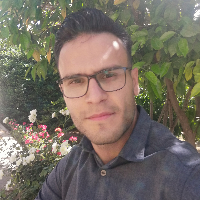Structural Modeling of Factors Influencing Local Resident's Perception Towards Supporting Sustainable Tourism Development in Persepolis
Historical complexities constitute one of the important identity components of a society and indicate as well, its cultural structures. Persepolis, a nearly 2500 years old historical site, has been fascinating for domestic and foreign tourists. People who live near the complex should play an important role in managerial decisions. But residents of these villages have not been able to play their role properly. There are many villages in the vicinity of this complex and it means that any decision-making process at Persepolis have important impacts on lives of the residents. The concept of community is one of the basic human needs and a factor that can control the local and social damage. This concept often can be considered from different viewpoints, such as psychology and sociology. These viewpoints have their own perspective. quality of tourism is an important factor for both local residents and tourists arrival. Research shows that local residents are extremely concerned about their environment. Local residents have an important role in reducing negative effects caused by tourists and tourism development. So the level of local involvement can reduce environmental damages. Moreover, with the involvement of local residents not only can social and cultural identities be maintained, but also encouraged. Overall, this study is aimed at considering different factors influencing local residents perception towards supporting sustainable tourism development in Persepolis
In this research, a descriptive, survey method was used and in terms of purpose, it is an applied research. Five villages of Kenareh, Jalian, Firouzi, Shahrak-e Mahdieh and Shahrak-e Vali-Asr were chosen as the population of the study. The instrument used for gathering data is a questionnaire whose validity and reliability were measured through confirmatory factor analysis and Cronbachs alpha. Using categorical sampling and Cochrans table, a total of 385 questionnaires were distributed among and completed by local people. Structural equation modeling, Pearson coefficient and one-sample T-test were used to verify the hypotheses of the research.
Todays, the main objective of development programs is to create participatory strategies in local communities. According to the results, in this study 79 percent of the participation were male and 21 percent were female. Most participants in this study were in the age group of 20 to 25 years old. In terms of occupation most were self- employed (30 percent) and agriculture held the lowest number of job holders. in terms of level of education, most held high school diploma. Results showed that social participation with a coefficient of 0.79 has the most effect on local residents perception towards sustainable tourism development in Persepolis. Social attachment with a coefficient of 0.17 has a positive and significant relationship with local residents perception of the complex of Persepolis.. Lastly, local residents perception has a significantly positive relationship with supporting Persepolis complex and sustainable tourism development.Also, the results showed that social participation has a positive effect on the understanding of local residents in the selected villages. Thus, social participation is one of the most important factors in local resident's perception. Social attachment has a positive impact on local resident's perception and support of Persepolis as a World Heritage Site (0/22). The amount of social participation and support for sustainable tourism development Impact factor (0/62) showed that there is little impact between social participation and support for sustainable development. Local perception has a positive impact on support for Persepolis as a world heritage (Impact factor: 0/36). Since Persepolis is registered at UNESCO, the people who live there have a sense of honor and it has reinforced their feelings of social attachment and support for this World Heritage Site.
- حق عضویت دریافتی صرف حمایت از نشریات عضو و نگهداری، تکمیل و توسعه مگیران میشود.
- پرداخت حق اشتراک و دانلود مقالات اجازه بازنشر آن در سایر رسانههای چاپی و دیجیتال را به کاربر نمیدهد.


